Introduction
The Takashi Murakami art style is a captivating fusion of pop culture and fine art, leading the groundbreaking Superflat movement. This unique approach (sometimes classified in Neo Pop) dissolves the traditional boundaries between high art and commercial aesthetics, creating a vibrant universe where Japanese motifs and contemporary life collide. Murakami, often compared to Andy Warhol, operates a bustling studio and engages in high-profile collaborations that highlight his innovative style. Through Superflat, Murakami not only showcases his distinct aesthetic but also fosters a community of artists who blur the lines between the past and present, the East and West.
Bridging Worlds: The Confluence of Pop and Tradition
The Takashi Murakami art style is a fascinating dialogue between the worlds of pop culture and fine art. His strategy involves:
Embracing Japanese Pop Aesthetics
Murakami infuses his artwork with the spirit of manga, anime, and the broader otaku culture, drawing upon the vibrant, often whimsical characters that populate these narratives.
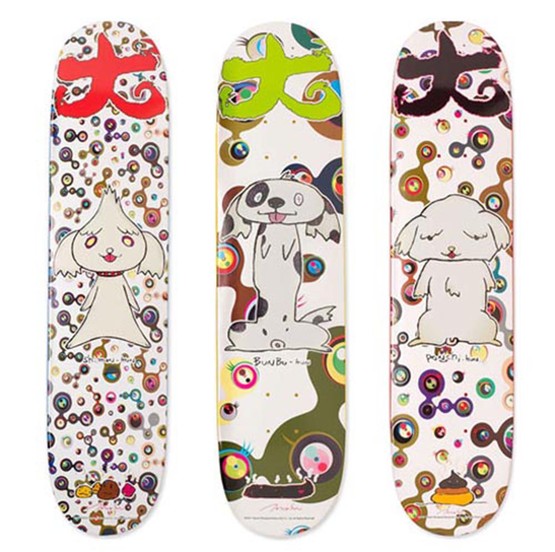
This pop culture infusion extends to collaborations with global music icons, fashion houses, and tech giants, such as Kanye West, Pharrell Williams, Louis Vuitton, Supreme, Vogue, and Google. These partnerships underline Murakami’s knack for weaving the threads of popular and high culture into a cohesive artistic vision.
Nodding to Tradition
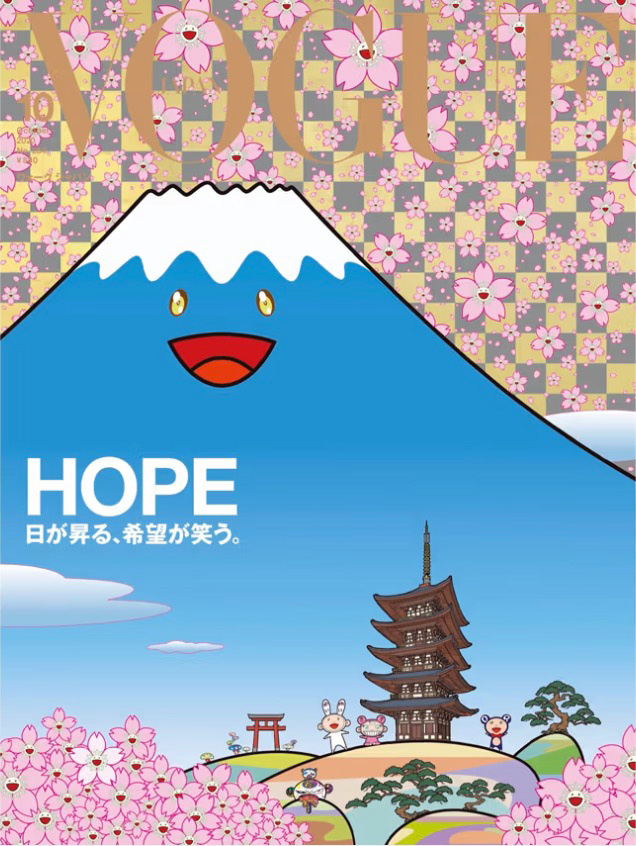
While deeply embedded in contemporary culture, Murakami’s work is equally conversant with Japan’s rich artistic heritage. References to ukiyo-e woodblock prints, nihonga painting, and Zen philosophy permeate his creations, bridging the past with the present in a visually captivating manner. Influences from Western art history and science, seen through nods to Hokusai, Monet, Warhol, and even Einstein, further enrich his oeuvre, creating a multi-layered narrative that spans cultures and epochs.
Forging Superflat
The Superflat movement, pioneered by Murakami, is both a stylistic innovation and a philosophical stance. With its use of flat planes of color, simplified shapes, and a distinct lack of perspective, Superflat challenges the hierarchical distinctions between various forms of art, blending the traditional with the contemporary, the Eastern with the Western. This movement not only showcases Murakami’s unique aesthetic but also offers a platform for artists with similar visions, fostering a community that defies conventional art boundaries.
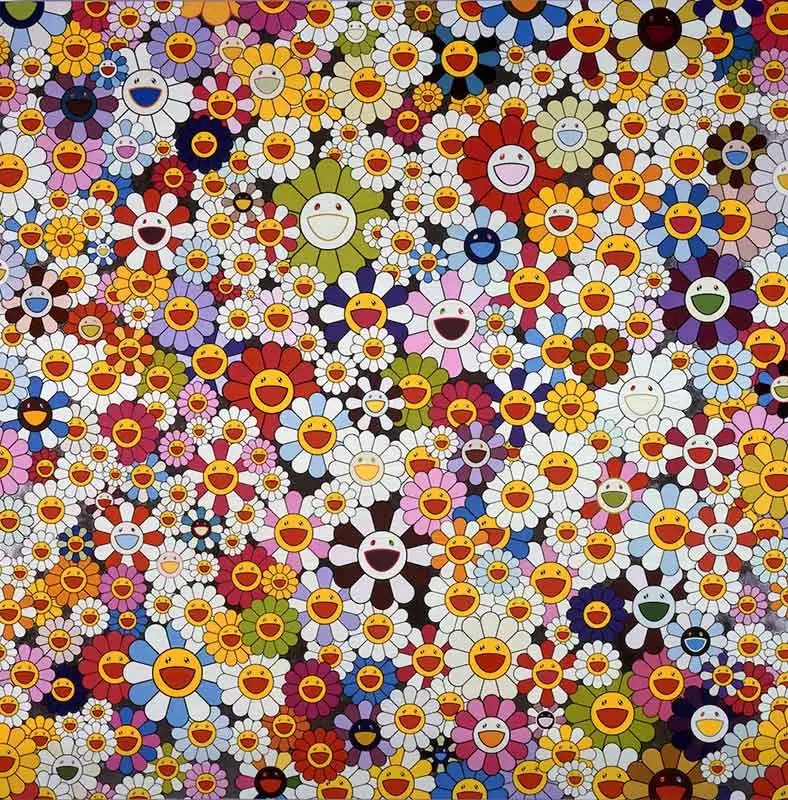
“Flowers, Flowers, Flowers” (2010) showcases Superflat perfectly. It features bright, smiling flowers in a dense, hypnotic pattern. This work highlights Superflat’s blend of high and low cultures and post-war Japan’s flat consumer culture. Originally in acrylic on canvas, it now appears in sculptures and merchandise.
Most Famous Artworks by Takashi Murakami
Here are five of his most famous pieces, each distinguished by its composition, significance, year of creation, medium, and, where applicable, auction price.
My Lonesome Cowboy (1998)
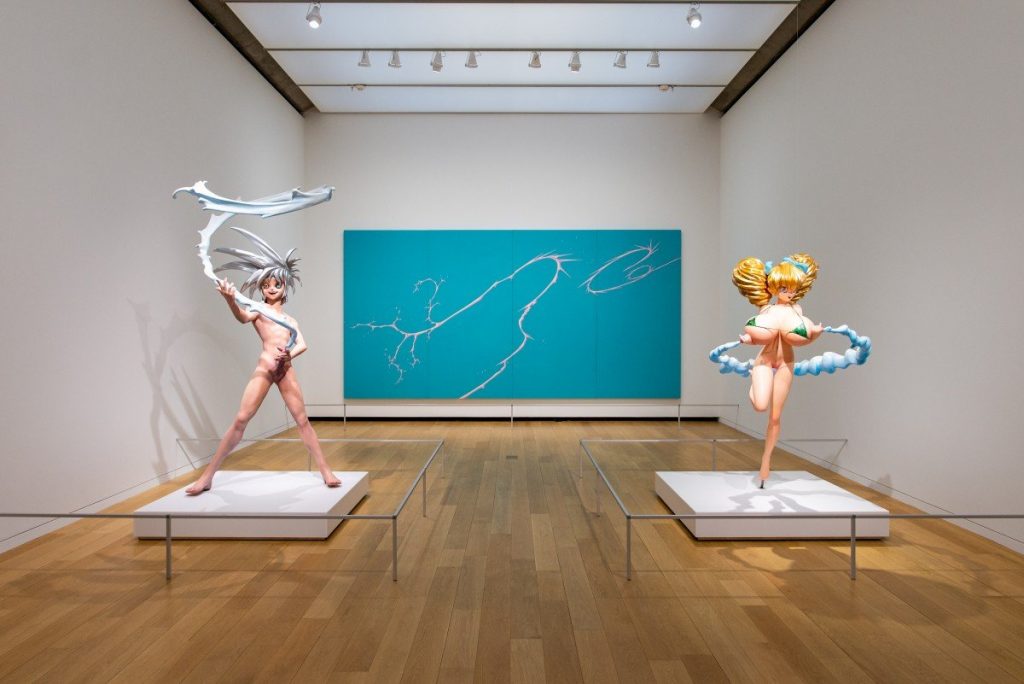
- Composition: This sculpture features a life-sized, anime-inspired young man in a moment of exaggerated, sexual exuberance, creating a lasso with his own semen.
- Significance: It represents Murakami’s commentary on the otaku subculture and the commodification of sexual fantasies within Japanese anime and manga.
- Medium: Oil, acrylic, fiberglass, and iron.
- Price: Sold for approximately $15.2 million at a Sotheby’s auction in 2008.
727 (1996)
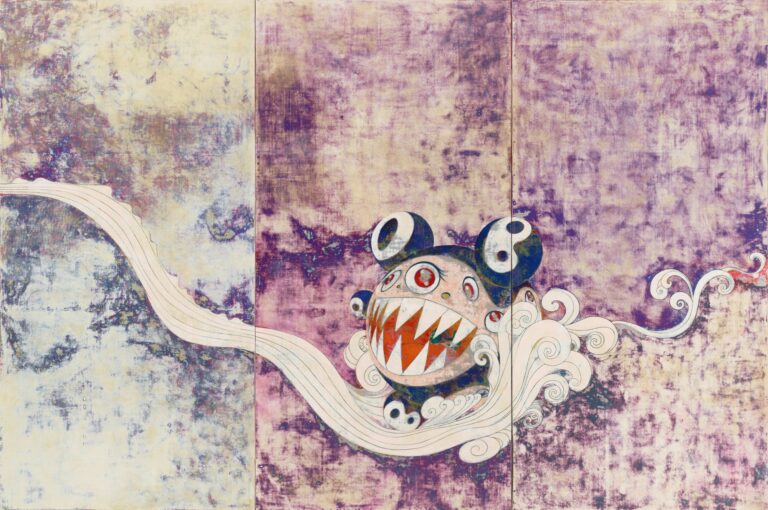
- Composition: A triptych featuring Murakami’s recurring character, Mr. DOB, set against a swirling backdrop reminiscent of traditional Japanese paintings and pop art.
- Significance: This piece introduces Mr. DOB, who serves as both a self-portrait and an exploration of the artist’s identity within the commercialized world of art.
- Medium: Acrylic on canvas board.
- Price: While specific auction prices for “727” are not readily disclosed, similar works by Murakami have fetched millions in the art market.
Tan Tan Bo Puking – a.k.a. Gero Tan (2002)
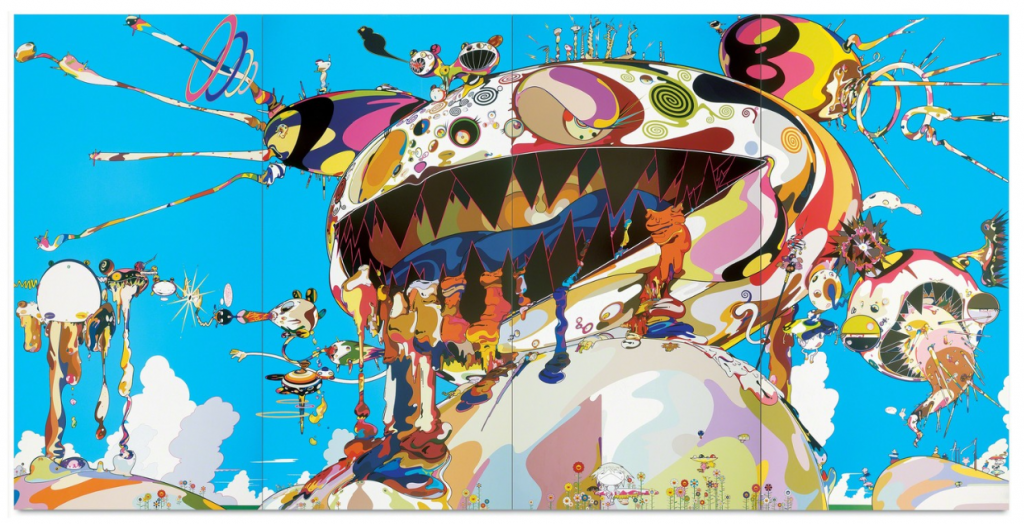
- Composition: An explosive, chaotic portrait of Mr. DOB in a state of disarray, surrounded by colorful, grotesque imagery and characters.
- Significance: It reflects the darker aspects of Murakami’s art, exploring themes of anxiety, destruction, and the impact of Japan’s post-bubble economy.
- Medium: Acrylic on canvas.
- Price: Not publicly sold, but signed and numbered screen prints were sold in an edition of 300. A sister work entitled Tan Tan Bo sold for more than $5 million at a Christie’s auction in 2018.
Flower Ball (2002)
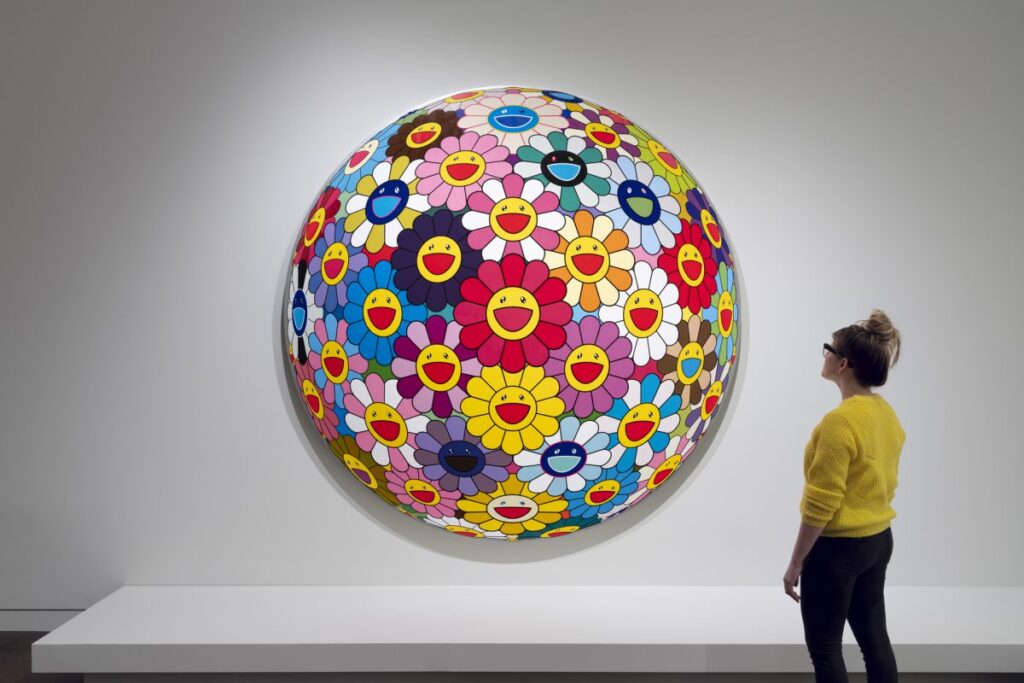
- Composition: A large, spherical arrangement of Murakami’s signature flower motifs, each petal adorned with a face, creating a mesmerizing, kaleidoscopic effect.
- Significance: Symbolizes the fusion of organic and artificial beauty, questioning the nature of happiness and the pursuit of pleasure in contemporary society.
- Medium: Acrylic on canvas, with variations including sculptures and prints.
- Price: Various “Flower Ball” prints and sculptures have been sold, with prices ranging from tens of thousands to over a million dollars at auction.
The Cultural and Social Resonance of the Takashi Murakami Art Style
Murakami’s art impacts more than just the visual; it touches deep cultural and social themes. His creations reflect his life, wider generational, and national values. He mixes pop culture with fine art, challenging both Japanese and Western views. This mix fosters dialogue, pushing us to question biases and embrace different views. Murakami links varied worlds, celebrating their diversity through his Superflat concept. This approach not only breaks down art world barriers but also connects the globe. He challenges the norm, promoting a broader, inclusive art vision.
Conclusion
In a time when the boundaries between high and low culture increasingly blur, Murakami’s work is a testament to the power of art to transcend these divisions, offering a rich tapestry that weaves together the threads of history, culture, technology, and imagination. As we study the Takashi Murakami art style, we find not just the beauty of his art but the depth of its impact, challenging us to see the world in a new light. Through Murakami’s eyes, we are invited to explore a universe where pop culture and fine art are not at odds but are parts of a larger, more colorful, and more inclusive world. His work not only captivates the eye but also stimulates the mind, making Takashi Murakami a pivotal figure in contemporary art whose influence reverberates far beyond the gallery walls.
Read more:
- Kamisaka Sekka: A Maestro of Ukiyo-e’s Evolving Canvas
- Yoshitomo Nara: Blending Ukiyo-e and Pop Culture in Japanese Art
- Tatsuro Kiuchi: The Japanese Illustrator Who Loves Old Things
- Yayoi Kusama: A Polka-Dotted Revolution in Art
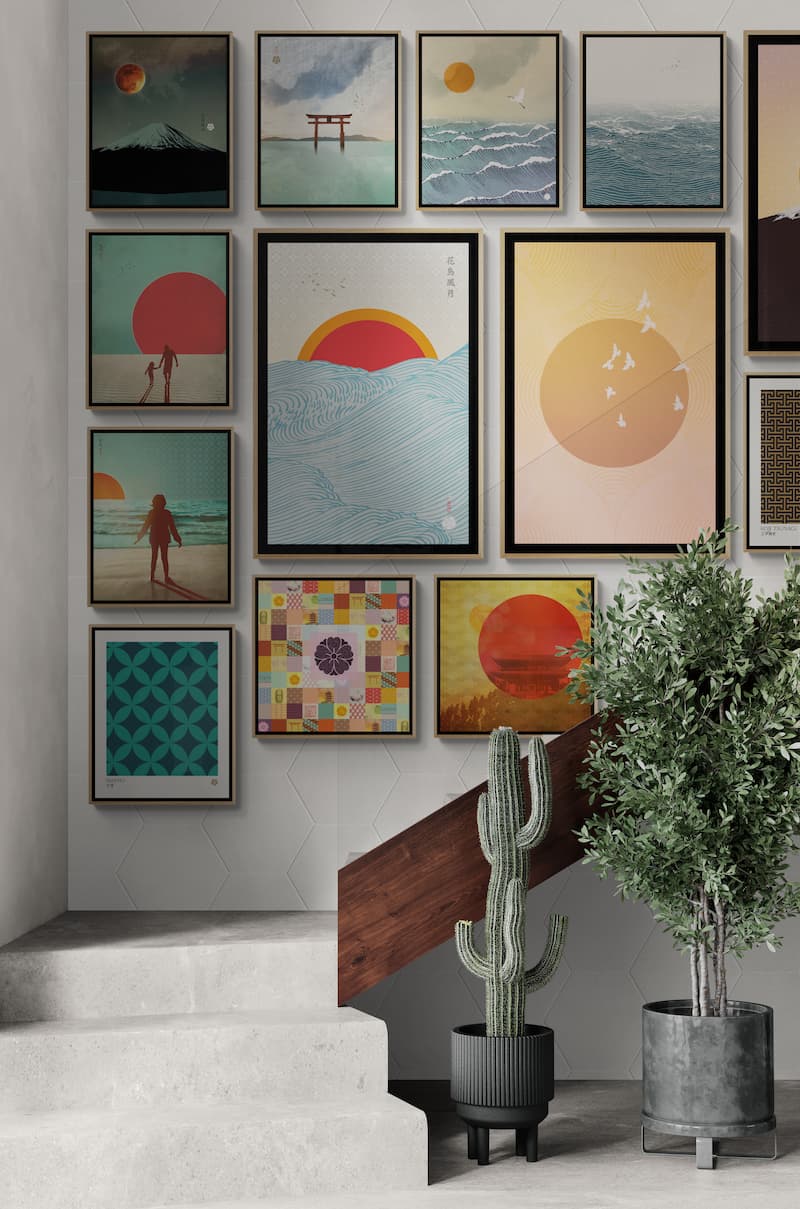
At The Art of Zen we carry a selection of our own hand-crafted original Japanese art prints in the ukiyo-e and Japandi style. Some of our best selling work is Mount Fuji wall art and Japandi wall art.
Add some zen to your space with brilliant original art from the Art of Zen shop.
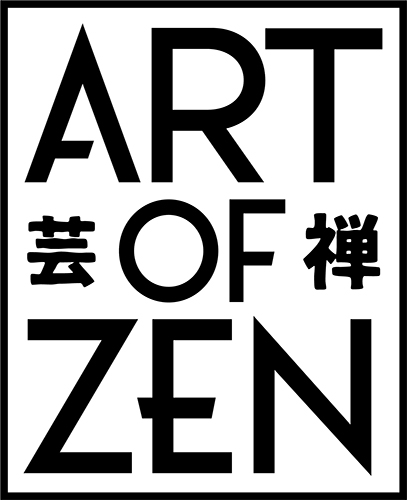



0 Comments